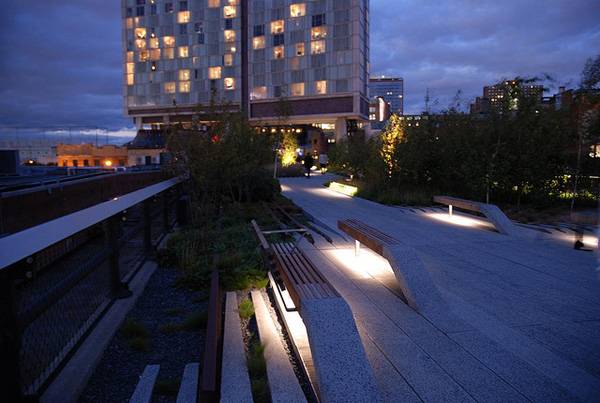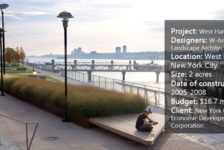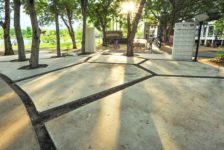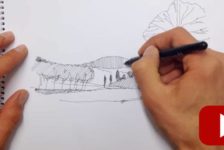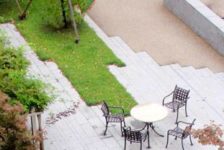Facts about the famous High Line project to share and impress your friends with. The High Line in New York City is one of the most well known and amazing redesign landscape projects in recent years. While inspired by the French Promenade Planteé, the beloved park has kept its own character and written its name in capital letters on New York City. Transforming the High Line from an elevated rail line serving the city’s industrial district to the 1.45-mile-long public space we enjoy today meant bringing together a lot of different fields, ideas, and people. Yes, a lot has been said about the High Line, but here we dig a little deeper to reveal some interesting tidbits that may not be so well known.
7 Facts About The High Line
1. Changing the Rules of the Urban Ecosystem The bright High Line has had a strong influence on its surrounding neighborhood in many ways — some of them a little controverted. Its post-industrial location attracts the attention of new businesses focused on economically higher classes, meaning that the Median Market Value grew 103 percent between 2003 and 2011 for the closest places. But that hasn’t translated to an improvement in area residents’ earning power. WATCH: New York’s New High Line Park 2. The Drainage System One of the main challenges of gardening the High Line is that you only have an average depth of 18 inches. This brings up questions about how to drain water when necessary and how to improve water retention during the hottest seasons. The drainage system uses open-jointed concrete planks for draining and a series of specific layers under the topsoil. The first of them is the subsoil and a filter fabric as a drainage mat. Then there is a plastic egg-crate drainage panel that allows the retention of water for more efficient use. You can find more detailed information here. WATCH: The High Line Design Video 3. The Garden was Already There
As photographer Joel Sternfeld showed through his amazing book, “Walking the High Line”, nature had beautifully taken over the abandoned structure many years before anyone thought of creating a park there. The powerful images of that wild, elevated landscape grown from the ruins are a bit melancholic and full of meaning. The designers took this and focused their effort on preserving the essence of an unexpected garden in the sky of New York City. That is especially notable along Section 3.4. What the High Line Could Have Been
Have you ever thought of the High Line as a lap pool? That was one of the winning projects, among others, in the 2003 Ideas Competition that the Friends of the High Line organized when they were looking for innovative purposes. They received 720 possible projects, including ones from the well-known Steven Holl Architects and Zaha Hadid Architects. If you are curious to know more about the alternative ideas, you can have a look at them here. You may be surprised by the different points of view. 5. Behind the Movable Chaise Lounge Chairs You can find one of the most iconic and enjoyable parts of the High Line at the Sundeck: the wooden, movable chaise lounge chairs. Installed on the original rail tracks, the chairs allow people to closely connect with the urban landscape, as William Whyte studied in 1980. He conducted a series of experiments in New York City, which were shown in the film, “The Social Life of Small Urban Spaces”, and in the book of the same name. As you can see, his ideas have been very influential in public space design, with the purpose of making these spaces more human. 6. Sustainable Goals From the Furniture The seating steps and the “peel-up” benches you can find in Section 2 have skeletons made of hardwood from demolished buildings and exterior skin made from FSC-certified Brazilian wood. In the future, all of that material could be reused again in a different way.
7. Agri-tecture Keeps the Wild Touch There is a wide range of possible effects and combinations between completely artificial hard paving and 100 percent wild, vegetated ground. This is what James Corner Field Operations and collaborators explored through the concept of Agri-tecture when designing strategies for the High Line. They created planting beds in the railway as nature had previously done, used open joints among the pre-cast paving planks for letting plants grow wildly, and reinforced the idea of gradient along the cultivated boundaries. WATCH: Elevated Thinking: The High Line in New York City (56:49 minutes of viewing) You can learn more about the High Line on the Friends of the High Line website.Recommended Reading Related to The High Line:
- High Line: The Inside Story of New York City’s Park in the Sky by Joshua David
- On the High Line: Exploring America’s Most Original Urban Park (Revised Edition) by Annik LaFarge
Article by Elisa García Nieto Return to Homepage
Published in Blog




